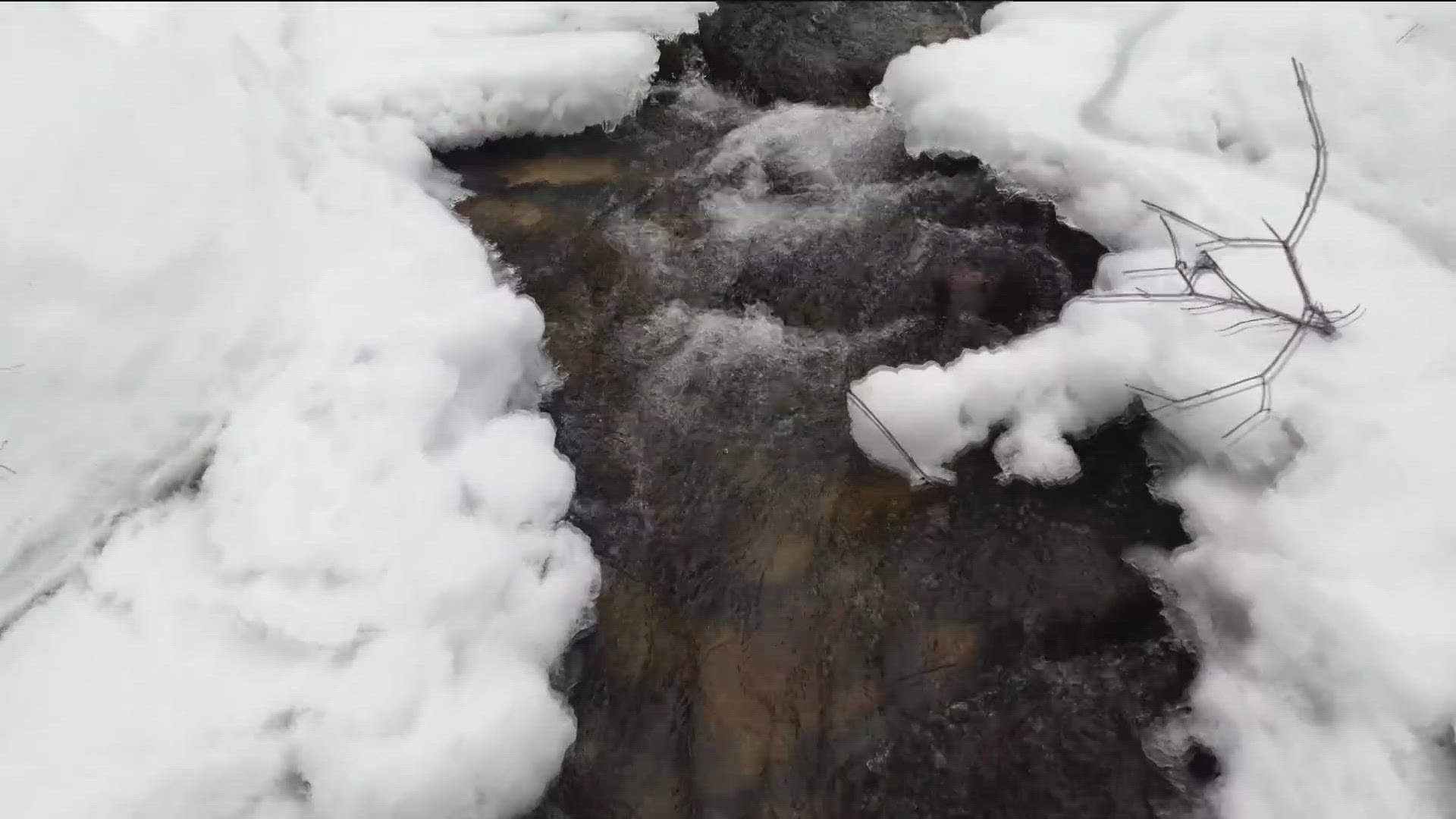IDAHO, USA — Idaho's snowpack is essential for our water supply during the warmer months. Managing that water from the time it melts, to when it's flowing through your tap or irrigation ditches is a tricky balancing act.
Careful planning, continuous collaboration and meticulous measurements, all go in to making sure that southwest Idaho has water in the warmer, drier months.
"The best day on my job is to make sure that people don't even know I exist," said Jon Roberts, the water management lead for the Snake River Basin for the U.S. Army Corps of Engineers. "If we could perfectly control and forecast the river, then nobody even knows that we're doing our job."
The corps is one of several federal and local agencies that work together to manage the snowmelt that flows into our reservoirs and then through our rivers. The agencies hand off official decision making at different times of the year. In general, the Bureau of Reclamation has the final say from mid June to March, then they hand it off to the Corps some time in March through to mid June. The Boise watermaster is also working in close coordination with them.
All year long, the Army Corps of Engineers, Bureau of Reclamation, and the Boise watermaster with the Idaho Department of Water Resources work very closely together to keep water flowing.
"I definitely think it's unique, and it is a complicated system," Roberts said. "And it's good that it is complicated, because that allows different agencies to collaborate to kind of get as much efficiency out of the system as possible."
He said there are two primary goals of managing the system. One, to reduce flood risk and two, to provide water to the valleys. Water managers also have to consider supporting environmental needs, recreation, and creating hydroelectric power.
"We have dedicated people looking at the complexity of it year round," Roberts said.
When making decisions about increasing releases in the late-winter and spring months, officials have to weigh a lot of factors. Essentially, water managers are walking a tightrope, if they release water too soon, water may get close to being depleted in the warm and dry months.
"Our team really just focuses on trying to ensure that we're minimizing the damages and impacts there, as well as not jeopardizing the water supply and irrigation delivery later in the summer when people need it," Roberts said.
If they release water too late, and the area continues to get moisture, parts of the Boise River can reach flood stage.
Holding the water for as long as possible is part of a strategy to make sure water is there late in the season.
"The water that we're going to release here in April and May hasn't even arrived yet, which is why we don't want to release water, because we don't know if it's going to come yet," Roberts said. "As soon as we get an indication on that, that's when we start trying to meter out the volume and the high peak, so it doesn't impact the town."
Historically, there have been big impacts to Idaho towns when rivers flood. In their natural state, these rivers can run wild and flood large areas in the spring.
"Last year, if we had no reservoirs in place, the natural flow that would have come through town would have been about 17,000 (cubic feet per second) and the late part of May and then right under 20,000 in the first part of May," Roberts said.
Roberts added the flood stage in Boise is 7,000 cubic feet per second (cfs). Catastrophic damage can happen at 10,000 cfs. Without the reservoir system, we would have seen double the amount of water that it would take to cause catastrophic damage.
The flip side of that is when we have a dry season, water levels can get depleted, which can lead to irrigation seasons getting cut short. That happened in 2021, and had a big impact on crops and farmers.
"There's a lot of experts that we leverage and utilize their expertise to help get to the right answer as soon as we can in real time," Roberts said. "There's just a lot of people that are looking out for the best interest."
In an area that's technically a desert, the region has water managers working to make sure that our water, and our everyday lives, keep on flowing right along.
Watch more Local News:
See the latest news from around the Treasure Valley and the Gem State in our YouTube playlist:
HERE ARE MORE WAYS TO GET NEWS FROM KTVB:
Download the KTVB News Mobile App
Apple iOS: Click here to download
Google Play: Click here to download
Watch news reports for FREE on YouTube: KTVB YouTube channel
Stream Live for FREE on ROKU: Add the channel from the ROKU store or by searching 'KTVB'.
Stream Live for FREE on FIRE TV: Search ‘KTVB’ and click ‘Get’ to download.

